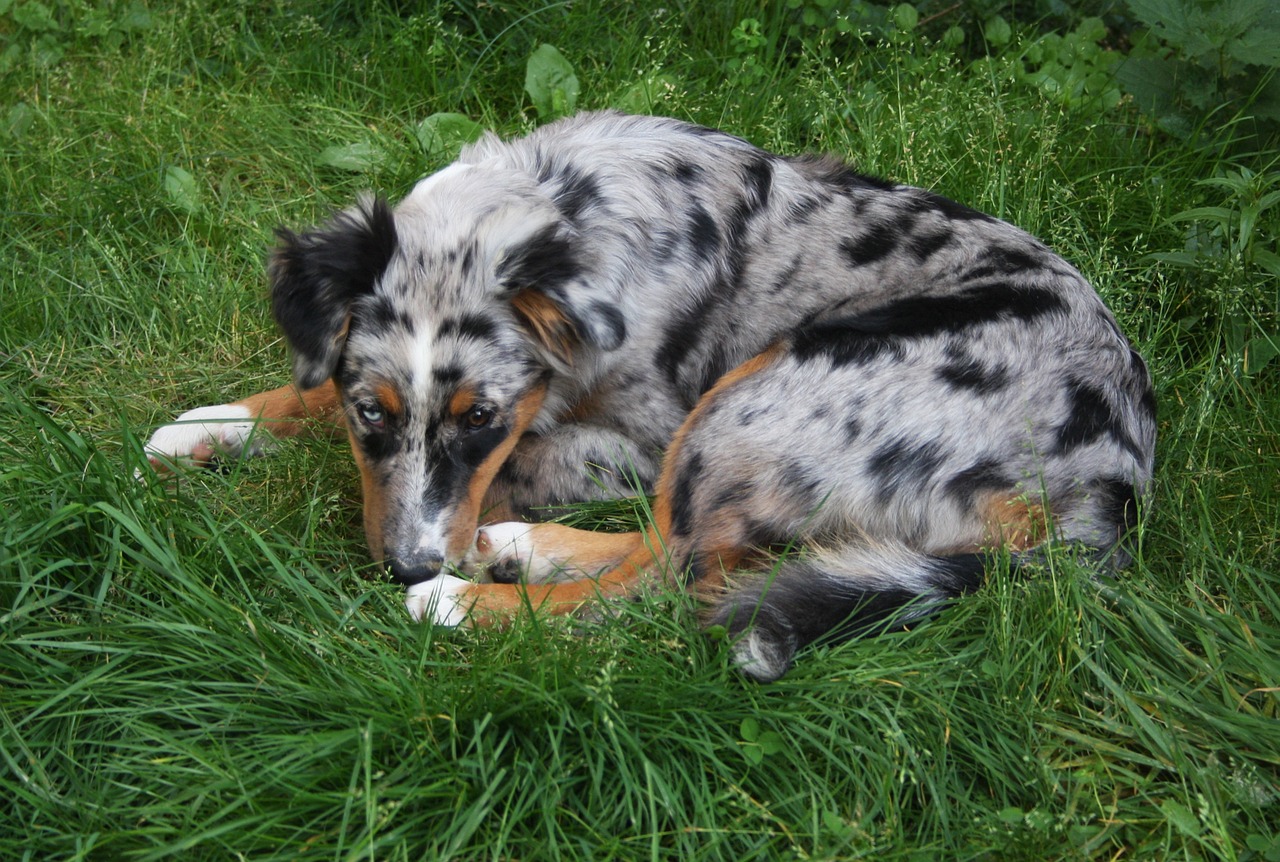
Australian Shepherds, often referred to as Aussies, are a vibrant and dynamic breed known for their exceptional intelligence, versatility, and high energy levels. Despite their name, this breed was developed in the United States, originally bred for herding livestock and serving as valuable farm dogs. With their strikingly colorful coats and expressive eyes, often showcasing the fascinating heterochromia, Aussies have captivated dog lovers worldwide. These dogs are not only dedicated workers but also enthusiastic participants in dog sports and loyal family companions. Their active minds and agile bodies lead them to display a variety of behaviors that can be both charming and unusual. These habits often stem from their herding heritage, their need for mental stimulation, and their strong bond with their owners. This article will explore seven of the most unusual habits of Australian Shepherds, delving into the reasons behind these behaviors and how owners can effectively manage them.

1. “Ghost Herding”
One peculiar habit of Australian Shepherds is what can be termed “ghost herding,” where they attempt to herd animals, people, or even objects that move unpredictably, despite the absence of actual livestock. This behavior stems from their strong herding instincts, which if not directed properly, can manifest in herding children, cars, or even a running vacuum cleaner. To manage this, providing structured herding activities, like herding balls or organized livestock herding, can help channel these instincts productively. Regular training and exercise that mimic herding tasks can also prevent the misapplication of these behaviors in inappropriate settings.
2. Intense Staring
Aussies are known for their intense and focused stare, often used during herding to control and move livestock. This powerful gaze can sometimes be disconcerting when directed at people or other pets in the household. This “eye” is a hallmark of their working style, reflecting their concentration and determination. Understanding this behavior is crucial, and teaching an Aussie when it is appropriate to use their stare through commands can help manage where and at whom they direct this behavior.
3. Shadow Chasing
Australian Shepherds may develop a habit of chasing shadows or reflections, a behavior that could be a response to their high prey drive and acute visual perception. While this can seem harmless or playful, it can escalate into an obsessive behavior if not checked. Providing ample mental and physical stimulation can help redirect their focus from shadows to more productive activities. Engaging them in agility training, puzzle games, or regular interactive play sessions can prevent the fixation on shadows or lights.
4. Digging
Digging is another habit that some Australian Shepherds may exhibit, particularly if they are bored or under-exercised. Originally, digging might have served a purpose in a farm setting, perhaps to unearth rodents or to create cooling spots. To mitigate unwanted digging, ensuring that Aussies have a designated area where they can dig, such as a sandpit, along with more structured exercise routines, can help manage this behavior.
5. Skittishness in New Situations
Despite their boldness, Australian Shepherds can sometimes be skittish or wary in new or overly stimulating environments. This can be attributed to their sensitivity and alertness, traits that make them excellent herders but can also result in cautious behavior. Gradual socialization from a young age, exposure to various environments, and positive reinforcement can help build confidence and reduce anxiety in unfamiliar situations.
6. Obsessive Compulsiveness
Some Aussies may display obsessive-compulsive behaviors, such as incessant ball chasing, circling, or repetitive barking. These behaviors may develop as a result of their need for constant activity and mental engagement. Providing a routine that includes plenty of physical activities and mental challenges can help curb these compulsive habits. Regular training sessions that teach new skills or improve existing ones can also be beneficial in keeping their minds engaged.
7. Strong Attachment to Owners
Australian Shepherds often form an extremely strong attachment to their owners, which can sometimes lead to separation anxiety when left alone. This loyalty and bonding make them excellent companions, but it can also pose challenges if they become overly dependent. Teaching independence through crate training and encouraging self-entertainment with toys that stimulate their minds can help alleviate anxiety when they are alone.
Australian Shepherds are a breed that embodies a mix of enthusiasm, intelligence, and loyalty, traits that can lead to a variety of unusual but manageable behaviors. These behaviors, from ghost herding to strong attachments, highlight the importance of providing appropriate outlets for their energy and instincts. Through understanding, training, and proper exercise, owners can ensure that their Australian Shepherds live happy, healthy, and well-balanced lives, fully embracing the unique characteristics of this remarkable breed.
Discover more from reviewer4you.com
Subscribe to get the latest posts to your email.





